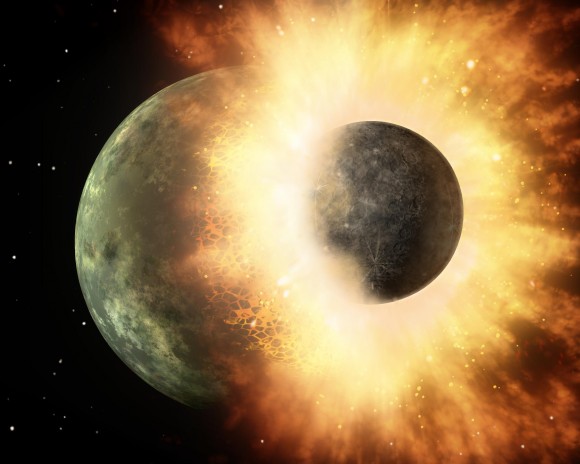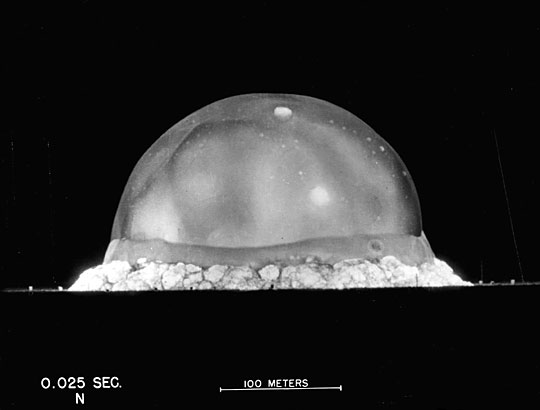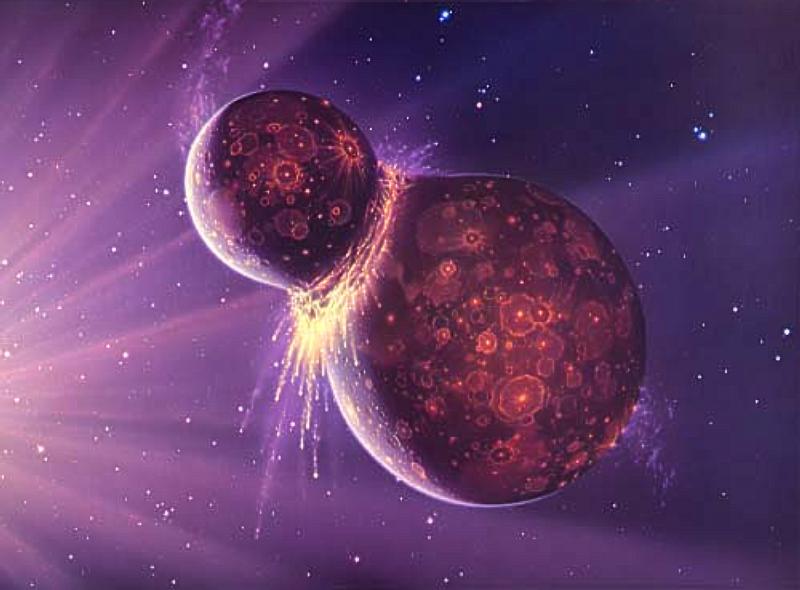Through Nuclear Glass: Moon and Bomb

For hundreds of years, scientists have tried to explain how the moon was formed. Some thought that it came out of material lost by the Earth due to centrifugal force, others assumed that the Earth that had already formed the Moon was captured by gravity. In recent decades, the most common hypothesis has become the model of the shock formation of the Moon , according to which the Moon appeared after an object about the size of Mars (called Theia) hit the Earth 4.5 billion years ago.
Judging by the new study of the international team, the key evidence of one of these theories can be derived from the first test of a nuclear weapon conducted on Earth 70 years ago. After examining samples of radioactive glass obtained from the Alamogordo site, where they tested the first nuclear bomb in the Trinity project, the scientists determined that the samples of moon stones demonstrate a similar lack of volatile elements.
The study was led by James Day - a professor from the Institute of Oceanography. Scripps at the University of California, San Diego. He and his colleagues studied glass samples obtained from the Trinity project to determine their chemical composition.
')

Trinity, 0.025 seconds after the atomic bomb
This glass is called trinite, and it appeared as a result of an explosion of a plutonium bomb in 1945 in a Trinity project as part of the Manhattan project. At a distance of 350 m from the point of the explosion, arkos sand (consisting mainly of granules of quartz and feldspar) was turned into greenish glass by extremely high temperatures and explosion pressure.
For years, scientists have investigated the reserves of this sand, which is supposed to be sucked inside the explosion, and then scattered in liquid form over the surface of the earth. When Day and his colleagues studied glass, they found that it lacked zinc and other volatile elements — evaporating at high pressures and temperatures — and their content in glass depends on the distance from the explosion.
According to a study published in Science Advances in February 2017, samples of trinite collected at a distance of 10 to 250 m from the explosion site, these elements were much smaller than those collected further from the epicenter. In addition, the zinc isotopes remaining in the samples were heavier and less likely to respond.
Comparing the results with studies of lunar stones, they found a similar absence of volatile elements in the latter. From here they concluded that the same high temperatures and pressures once raged on the Moon, which caused these elements to evaporate. This is consistent with the theory that the strongest blow occurred in the past, which turned the surface of the Moon into an ocean of magma.

The impact could have caused the Moon to appear, but other strong collisions could form the appearance of the Earth and other bodies.
As Day explained in a press release:
The results show that evaporation at high temperatures, similar to those observed at the beginning of the formation of the planets, leads to the loss of volatile elements and to the enrichment of residual materials with heavy isotopes. This speaks to common sense, but now we have found experimental evidence for it.
Although since the 1980s the model of the shock formation of the moon has dominated science, the debate about the origin of the satellite has not ceased and demanded new discoveries. For example, in January 2017 , a new study published in Nature Geoscience, authored by Raluk Rufa of the Weizmann Institute in Rehovot , showed that the Moon could have appeared as a result of weak but numerous collisions.
With the help of computer simulations, a team from the Weizmann Institute discovered that numerous collisions could form many small satellites around the Earth, which could then merge and create the Moon. But, having shown that volatile elements react to temperature and pressure equally, regardless of the place of reaction, Day and his colleagues offered fairly solid proof of a single blow.
This is one of the latest studies in a large series of scientific works that help scientists build limitations on the time and method of forming the moon, which, in turn, helps us understand the history of the solar system and its formation.
Source: https://habr.com/ru/post/373189/
All Articles